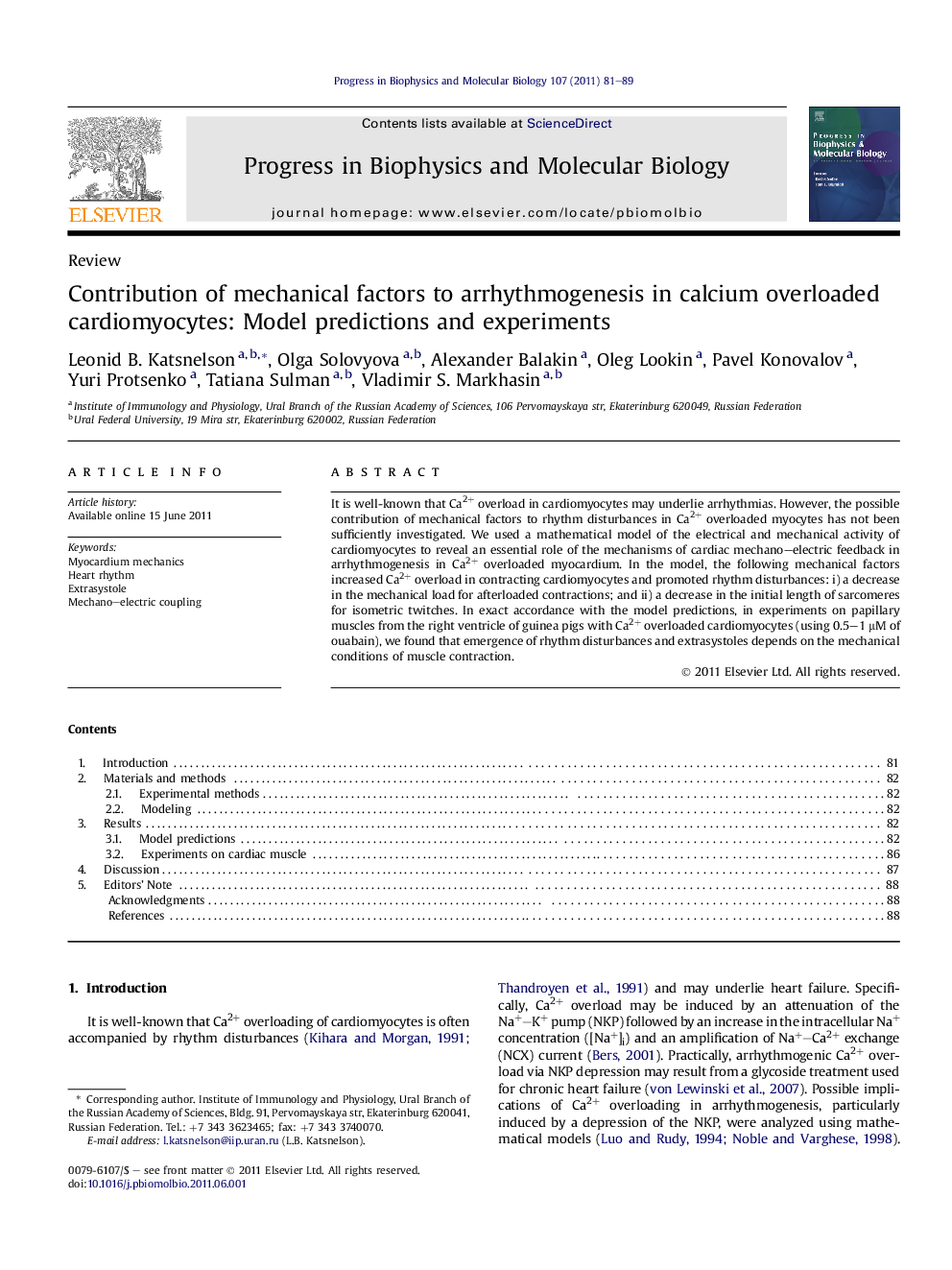| Article ID | Journal | Published Year | Pages | File Type |
|---|---|---|---|---|
| 10883607 | Progress in Biophysics and Molecular Biology | 2011 | 9 Pages |
Abstract
It is well-known that Ca2+ overload in cardiomyocytes may underlie arrhythmias. However, the possible contribution of mechanical factors to rhythm disturbances in Ca2+ overloaded myocytes has not been sufficiently investigated. We used a mathematical model of the electrical and mechanical activity of cardiomyocytes to reveal an essential role of the mechanisms of cardiac mechano-electric feedback in arrhythmogenesis in Ca2+ overloaded myocardium. In the model, the following mechanical factors increased Ca2+ overload in contracting cardiomyocytes and promoted rhythm disturbances: i) a decrease in the mechanical load for afterloaded contractions; and ii) a decrease in the initial length of sarcomeres for isometric twitches. In exact accordance with the model predictions, in experiments on papillary muscles from the right ventricle of guinea pigs with Ca2+ overloaded cardiomyocytes (using 0.5-1 μM of ouabain), we found that emergence of rhythm disturbances and extrasystoles depends on the mechanical conditions of muscle contraction.
Keywords
Related Topics
Life Sciences
Biochemistry, Genetics and Molecular Biology
Biophysics
Authors
Leonid B. Katsnelson, Olga Solovyova, Alexander Balakin, Oleg Lookin, Pavel Konovalov, Yuri Protsenko, Tatiana Sulman, Vladimir S. Markhasin,
